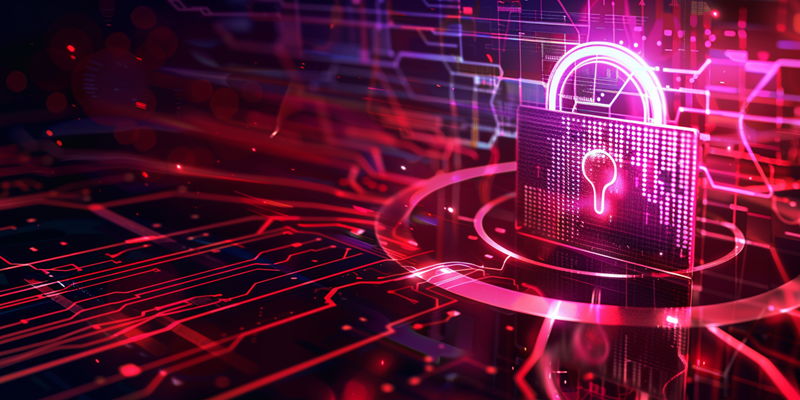The MITRE Corporation, a bedrock in the United States’ research and development sector, particularly for government interests, recently faced a daunting challenge—a cyber attack from a sophisticated nation-state actor, presumed to be the Chinese UNC5221. This episode brought critical attention to the vulnerabilities that threaten entities at the nexus of national security and technological progress. It offered a grim reminder of the audacity and sophistication of modern cyber threats, but also illuminated the strategies and resilience organizations like MITRE deploy to respond to and overcome such crises.
Unearthing the Cyber Intrusion
When two zero-day vulnerabilities were exploited in Ivanti Connect Secure VPN appliances, MITRE Corporation’s first line of digital defenses was breached. The attackers, through these covert avenues, gained access to MITRE’s NERVE network—an unclassified yet fundamental component for their experimental and prototyping capabilities. As the incident unfolded, the intruders adeptly navigated laterally within the network environment, commandeering an administrative account and embedding webshells and backdoors for long-term access. This modus operandi betrayed the hallmarks of a state-sponsored endeavor; the aggressors were not merely cybercriminals—they were strategists on a mission, equipped with tools and tactics befitting a nation-state’s covert operatives.
The response to the breach constituted an immediate and thorough investigation, followed by rigorous containment and eradication of the adversaries’ foothold within MITRE’s systems. Their actions showcased an exemplar of resilience—the coordination and implementation of predefined incident response protocols. This swift containment ensured that the breach remained isolated to the NERVE network, protecting the organization’s primary operations and external-facing systems from any spillover effect.
Mitigating the Cyber Assault
Thanks to their proactive incident response strategy, MITRE’s cyber incident teams managed to curtail the attack’s impact. They utilized established protocols designed for quick detection and containment, proving the adage that an organization’s strength is not solely in its preventive measures but also in its capacity to respond to and recover from the unexpected. This vigilance kept the core business and research operations insulated from threat actors and emphasized the fortitude of their cybersecurity infrastructure—a beacon for any establishment facing the digital abyss of high-risk threats.
MITRE did not merely circle the wagons. They recognized the attack as an opportunity to fortify their defenses against future assaults and to provide leadership within the cybersecurity community. Sharing the forensic details of the breach and the measures taken to recover promotes a wider understanding of the attack vectors utilized by sophisticated adversaries. The incident serves as a learning curve for similar institutions, demonstrating the value of transparency and shared intelligence in bolstering collective security postures.
Addressing the Broader Cybersecurity Challenge
The MITRE incident is not just a standalone event; it is a stern warning to organizations worldwide of the escalating threats from state-sponsored actors aiming at national security and high-tech sectors. The breach has reinforced the relentless need for cybersecurity awareness, adaptive defense strategies, and the unwavering commitment to protect critical assets. The cyber domain is a battleground of shifting frontlines and emerging threats, and in sharing their experience, MITRE is contributing to the collective defense, aiding others in preemptively strengthening their digital fortresses.
The broader implications of this cyber offensive are profound and far-reaching. As attackers refine their strategies and tools, organizations must ensure that their defensive tactics evolve at least at the same pace, if not faster. Collaborating with the global cybersecurity community, MITRE is championing an open exchange of insights about attack patterns and defense mechanisms, encouraging a proactive approach towards impending cyber threats and emphasizing the role of collective vigilance and action.
Bolstering Defenses with Technology and Knowledge
In the aftermath of the attack, there has been a concerted effort to enhance organizational defenses through the dissemination of technological solutions and educational resources. Managed WAF services, malware analysis tools like ANY.RUN, and on-demand webinars became assets for not just MITRE but for the corporate landscape at large, enabling real-time detection and interactive analysis to preempt future attacks. SMEs, in particular, are benefiting from these advancements, bridging the gap between their often limited resources and the sophisticated threats they face.
MITRE’s commitment to cyber resilience is manifested not just in their recuperative actions post-breach but also in their determination to ensure that every possible measure is taken to mitigate the risk of future incidents. The tools and knowledge they and others are fostering in the cybersecurity ecosystem represent a bulwark against the onslaught of an ever-evolving threat landscape.
An Ongoing Cybersecurity Battle
Recently, The MITRE Corporation, integral to U.S. government R&D, confronted a severe cybersecurity threat from what is believed to be a Chinese nation-state entity known by the handle UNC5221. This incident underscored the persistent and pervasive risks that even high-caliber organizations face from global cyber adversaries. While highlighting the persisting vulnerabilities at the crossroads of national security and tech innovation, the occurrence also signaled the determination and nimble countermeasures that institutions like MITRE utilize to meet and recover from such digital onslaughts. The breach by the advanced attackers stands as a stark indication of today’s cyberattack potency, propelling a renewed focus on cybersecurity strategy for entities guarding critical infrastructure and sensitive information.

